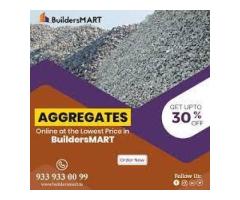What is Plastering | Types of Plastering and Types of Finishing
- Location: Jubilee Hills, Hyderabad, Andhra Pradesh, India
There are various kinds of mortars are accessible, for example,
Lime Plaster
Concrete Plaster
Mud Plaster
Stucco Plaster
Lime Plaster:-
The point when lime is utilized as a limiting material is called lime mortar.
Lime mortar is a kind of mortar made out of hydrated lime, sand and water.
Lime mortar is like lime mortar, the primary contrast depends on the use as opposed to the arrangement.
Mortar for lime mortar is typically ready by blending sand and lime to equivalent extents, to further develop the strength little amount of concrete is added to it.
Concrete Plaster mortar:-
At the point when concrete is utilized as a limiting material, it is called concrete mortar.
It is particularly appropriate for moist circumstances.
Concrete mortar is typically applied in one coat.
The thickness of the coat can be 12 - 15mm or 20mm relying on location conditions and the kind of building.
6mm thickness of putting of 1:3 or 1:4 Proportion is suggested for concrete putting of RCC surfaces.
Mud mortar:-
The surface is to be arranged precisely in a very way as that of lime mortar or concrete mortar.
Mud mortar is by and large applied in two covers, the main coat being 18mm thick while the thickness of the subsequent coat is kept at 6mm.
Plaster mortar:-
Plaster is the name given to the embellishing kind of mortar which gives a superb completion.
Plaster mortar can be utilized for inside as well as outside surfaces.
It is typically laid in three coats making the all-out thickness of the mortar around 25mm. The main coat is known as a scratch coat, the subsequent coat is called a fine coat, is otherwise called an earthy-coloured coat and the third coat is known as a white coat or completing coat.
Sorts of wrapping up:-
Smooth cast
Rock run
Roughcast
Surface completion
Rejected finish
Smooth cast:-
It is a completion which presents an evened-out and smooth surface.
The mortar for the completion is made by blending concrete and fine sand in a proportion of 1:3.
Rock run:-
It is a completion wherein the little rocks or squashed stones of reasonable size are tossed onto a newly applied finish layer of mortar and allowed to remain uncovered.
The mortar finish is made of concrete and a coarse total of 1:3 proportion.
Roughcast:-
It is a completion where the mortar for the last coat contains an extent of genuinely huge size coarse totals.
The mortar for completion is made by blending concrete, fine sand and coarse total in a proportion of 1: 1/2:3
Finished finish:-
In this completion, elaborate examples or finished surfaces are created by working with different devices in the newly applied last coat.
**For more information visit now:** https://www.buildersmart.in/blogs/Plastering/
Related listings
-
 Rehabilitation Centre in Banjara Hills.FreeOther Services Hyderabad (Andhra Pradesh) November 2, 2022UCCHVAS is committed in meeting the needs of the sub-acute patient by combining the comforts of home with exceptional clinical care. We have a team of highly qualified and supportive therapists ready to help you achieve your highest level of independ...
Rehabilitation Centre in Banjara Hills.FreeOther Services Hyderabad (Andhra Pradesh) November 2, 2022UCCHVAS is committed in meeting the needs of the sub-acute patient by combining the comforts of home with exceptional clinical care. We have a team of highly qualified and supportive therapists ready to help you achieve your highest level of independ... -
 Coarse Aggregates in Construction | Storing of Aggregates500033.00 US$Other Services Hyderabad (Andhra Pradesh) November 1, 2022Functions Of Fine and Coarse Aggregates in Concrete: Fine aggregates perform the following functions: 1. It helps with creating functionality and consistency in the blend. 2. It helps the concrete glue to harden the coarse total particles. 3. It assi...
Coarse Aggregates in Construction | Storing of Aggregates500033.00 US$Other Services Hyderabad (Andhra Pradesh) November 1, 2022Functions Of Fine and Coarse Aggregates in Concrete: Fine aggregates perform the following functions: 1. It helps with creating functionality and consistency in the blend. 2. It helps the concrete glue to harden the coarse total particles. 3. It assi... -
 Coarse Aggregates in Construction | Storing of Aggregates500033.00 US$Other Services Hyderabad (Andhra Pradesh) October 28, 2022Coarse aggregates are irregular broken stone or naturally-occurring rounded gravel used for making concrete. Materials which are large to be retained on 4.7 mm sieve size are called coarse aggregates, and its maximum size can be up to 63 mm. Coarse a...
Coarse Aggregates in Construction | Storing of Aggregates500033.00 US$Other Services Hyderabad (Andhra Pradesh) October 28, 2022Coarse aggregates are irregular broken stone or naturally-occurring rounded gravel used for making concrete. Materials which are large to be retained on 4.7 mm sieve size are called coarse aggregates, and its maximum size can be up to 63 mm. Coarse a...



